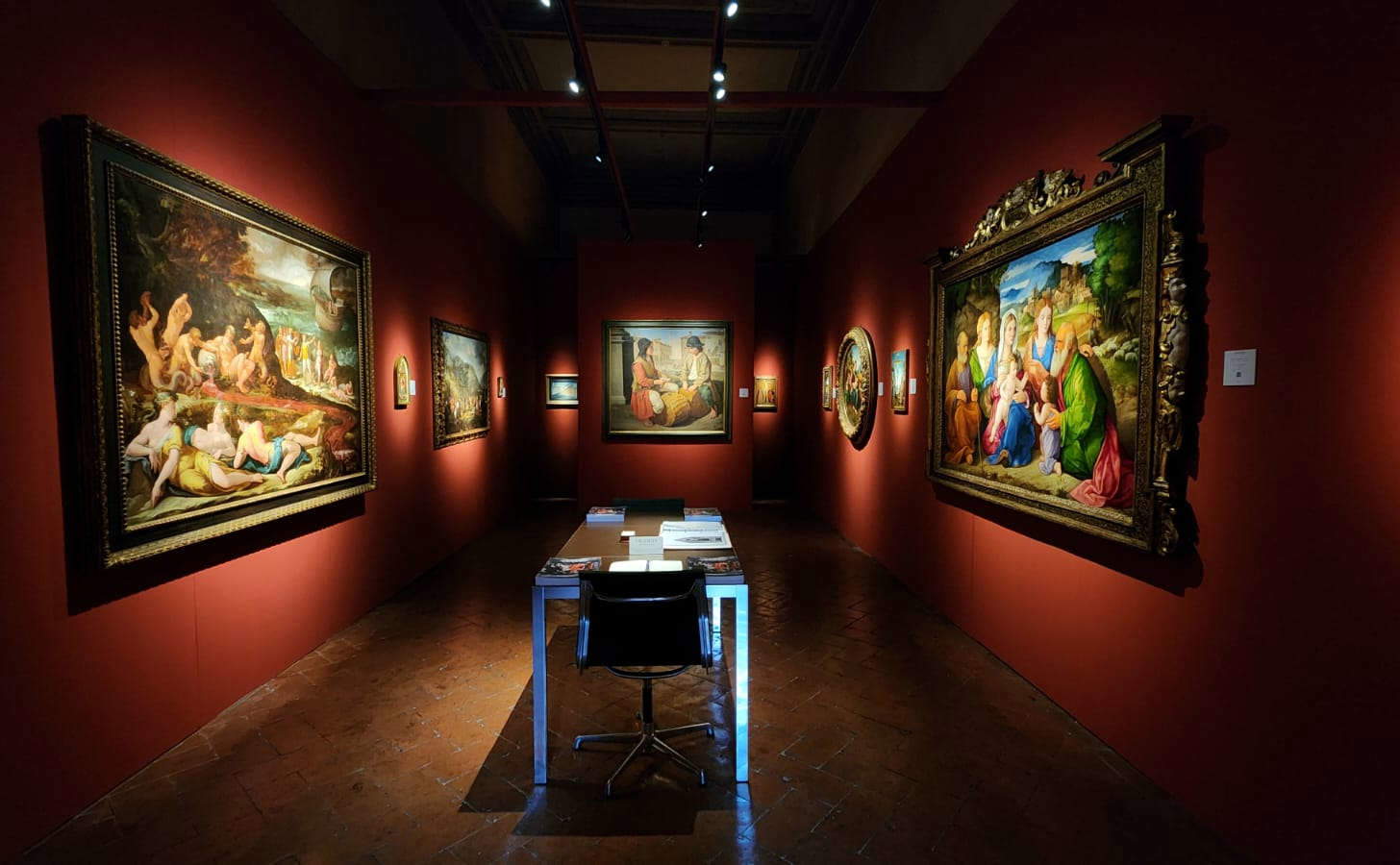It is rare for a measure affecting art to become the subject of wide public debate, just as it is rare for it to make its way into the topics of the day on social media: yet, the announcement of the5 percent VAT on works of art, the long-awaited and longed-for measure by all operators in the Italian art market and included last week in the decree-law “Urgent provisions for the financing of economic activities and enterprises,” has raised heated discussions, doubts, perplexity when not attitudes of open hostility toward the government, held responsible for having introduced a rule that extends a hand to the rich when it would have been more appropriate to offer some form of relief to all those families for whom even a basic necessity item represents an important spending chapter on the annual budget. Of course: it is entirely understandable the attitude of those who criticize the government for lowering VAT on works of art and not, for example, on tampons or diapers (the two items most often associated with this measure), for several reasons, although the fundamental reason remains the fact that the cut in theVAT on works of art touches a very sensitive nerve of public opinion, especially in a society that perceives a widening of inequalities and believes that there are different social priorities than reducing the value-added tax on works of art. And it is understandable because the VAT cut debate in the past months has never crossed the boundaries of our sector and has matured in a situation of substantial communication vacuum, since neither industry nor politics would seem to have taken on the task of explaining in detail the reasons for a measure that, however useful, is perceived as unfair, inequitable, and elitist. But the public should be a legitimate part of the debate and should be involved as much as possible, for reasons of information, clarity, and transparency about a measure of public interest that can have an impact on real life (i.e., not only that of those who buy works of art) and can have beneficial effects. A measure, in short, that has not been explained (let alone communicated) in the best possible way, and this situation risks generating distorted perceptions.
Cutting VAT on works of art is, in essence, a sectoral economic policy measure, whereas cutting VAT on certain basic necessities (tampons, diapers) is a social justice measure: in a nutshell, the same tool employed to achieve two different goals: on the one hand trying to stimulate a specific economic sector (the art market), and on the other trying to alleviate a daily and recurring cost for millions of women and families and promote social equity. It follows that, on the one hand, the risk of revenue loss should be offset, at least in the intentions of the legislature, by the possibility of increasing the volume of transactions, attracting investment and thus potentially having a direct and indirect fiscal return in the medium to long term, while on the other hand, the cost of the measure has a smaller fiscal impact if not zero, but allows a high symbolic and social return and is justified by principles of equity and rights.
At present, the technical report accompanying the decree on cutting VAT on works of art has not yet been published: one therefore awaits the document to understand how the State Accounting Office has expressed its opinion on a measure for which it is natural to expect an adequate analysis of the context (the real size of the sector, how much VAT really affects the choices of collectors and operators today, and so on), a reasonable assessment of the estimated cost to the treasury, and an ’analysis of the effects on the elasticity of demand (and thus how much effectively a lowering of VAT can generate new transactions), indirect returns (opening of Italian branches of foreign galleries, higher sales, major foreign artists deciding to rely on Italian galleries, and so on), the effects on import and export. To date, the only analysis that has been consistently cited in support of the goodness of the measure is the Nomisma Arte report: The Value of the Industry in Italy, sponsored by the Gruppo Apollo Association (a group that brings together various operators including gallery owners, auction houses, collectors, logistics companies), produced in collaboration with Intesa Sanpaolo, and which was distributed with a PDF file containing a series of slides. One could start from here to try to fully understand the rationale behind the measure.



The slides released by Nomisma have an entire chapter dedicated to the tax regime applied to artworks. A chapter that opens with a survey of sector operators, who were asked what risks the Italian art market would run if it did not adjust to European competitors where rates are lower (in France VAT is 5.5 percent, in Belgium and the Netherlands 6 percent, in Germany 7 percent). The main risks, according to those in the industry, are the decrease in investment in the domestic art market, the weakening of our country’s commercial attractiveness to foreign operators, the relocation of Italian-based operators to other countries with more competitive VAT regimes, and the reduction of the supply chain (artists, restorers, framers, fairs, and so on).
As for the decrease in investment in the domestic art market, the idea is, meanwhile, that lowering VAT will reduce the gap between Italy and other countries, in the sense that the work of the same artist, if purchased now for 10 thousand euros excluding VAT in Paris, will cost the collector a total outlay of 10,550 euros, while in Milan it would be necessary to pull out 12,200 euros. Needless to say, many collectors are not interested in a precise piece found only in the given gallery, but are satisfied with having purchased a work by artist X, and will therefore try to buy it where it is most convenient (there are many artists who do not have exclusivity and are also treated by different galleries on different countries). At the same time, the VAT cut should encourage the circulation of works and investments on the national territory: even a museum, faced with a lower VAT rate, for example, could be incentivized to replenish its collections. Practitioners and the government then imagine that the VAT cut generates ripple effects on the primary market: if prices become more affordable, it is possible that collectors will buy more, and if collectors buy more, galleries have more leeway to invest in emerging artists, productions, exhibitions, and catalogs. The measure should then also have some attractive power with regard to major foreign artists who may be more inclined to be represented by an Italian gallery: established artists also choose a gallery based on its access to the market, and if an Italian gallery is able to offer a more competitive tax regime, it also has more tools to attract the great artist (fewer import barriers, greater visibility in a country considered potentially strategic because of its advantageous tax regime, more support from a gallery that, with the advantage of reduced VAT, has more margin to offer the artist better productions, participation in fairs, communication campaigns and assorted tools). There is also an important implication to consider, namely, VAT on imports (which is now at 10 percent) will also be lowered to 5 percent: those galleries that import works from the United States, for example, will therefore be much more competitive.
As forcommercial attractiveness, the industry’s and, of course, the government’s bet is thatItaly will become more competitive as a marketplace for the art market, stimulating operators to open branches in Italy, as indeed several galleries have already done recently several galleries, the latest of which in chronological order is the Austrian Thaddaeus Ropac, one of the most important at the European level, which has decided to invest in Italy by opening an office in Milan: the measure was created to make sure that the example of Ropac and other foreign galleries that have recently opened their offices in Italy (among others Richard Saltoun, Cadogan, Thomas Dane) is followed as much as possible.
On the issue of relocation, the VAT cut should work in reverse, that is, as a disincentive: a gallerist, with such a low rate (the lowest in Europe) should have less reason to open a fiscal headquarters outside Italy. Consequently, the measure should also serve to keep operators in our country who might be willing to pack their bags to territories that offer friendlier systems. It is then estimated that the measure may have an indirect effect on the induced activity: more buying and selling of artworks means substantially more work for transporters, restorers, and fitters, as well as an incentive for galleries to invest in participation in art fairs, and more transactions also means more resources, for galleries, to invest in research and in the revitalization of the creative activity of living artists.



Those observing the sector from the outside might wonder why it is only in the last few months that there has been such a strong sense of urgency to catch up with France and Germany: the fact is that the introduction of the preferential tax rate in France and Germany is a very recent event, and operators have long insisted that the government offer the Italian sector a measure to shelter from the dumping of our neighbors. France and Germany countries lowered their rates (by 5.5 percent and 7 percent, respectively), essentially starting from a full rate regime (with a few exceptions we have already discussed on these pages), before we did: their rates went into effect on January 1, 2025. And they did so because, by 2025, European Union countries had to transpose a European VAT Directive (the 2022/542 of April 5, 2022) that gave each member state the option of applying reduced rates to a number of categories (up to a maximum of 24 out of 29) under the legislation. France and Germany decided to reserve reduced rates for works of art as well, with the stated aim of making themselves more attractive to the international market and encouraging the art trade, as stated at the time by their respective culture ministers. And Italy did not want to lag behind. Minister Alessandro Giuli also explicitly stated this: “With this decision, the government puts an end to an anomaly that made us less attractive compared to other European countries, where favorable tax regimes already exist. From today we can return to competing on equal terms, offering new opportunities to gallery owners, antiquarians, artists, restorers, transporters and scholars. It is a measure that enhances the entire art ecosystem, one of the most vital presidia of our cultural identity.”
So this is not a discussion that started out of the blue: Italian operators have simply been lobbying the government for more than a year precisely because they felt that, without an adequate corrective, Italy, which already shines less than France and Germany as an international marketplace, would be permanently tarnished. Indeed, operators estimate that failure to adjust could have serious consequences, and in particular that it could lead to major contractions in their turnover. Nomisma’s slides rattle off some numbers, obtained essentially from surveys done by the sector’s operators: an overall reduction in turnover of 40 percent is estimated for the sector as a whole, but this will have a greater impact on small galleries (for which a loss of 50 percent of turnover is estimated), less so on medium-sized ones (-42 percent), and large ones (-30 percent). Nomisma’s estimate would thus seem to belie what appears, in the eyes of the uninitiated, to be perhaps the most troublesome side of the VAT reform on works of art, namely the apparent gratuity to wealthy buyers: if Nomisma estimates such a significant contraction in the turnover of galleries dealing in contemporary art, it is evidently because it is believed that those who buy contemporary art already do so where it is most convenient to do so.
By contrast, the reductions for theantiques sector are smaller (-7% total, -10% medium antique dealers, -5% small antique dealers), simply because the antiques market has characteristics that make it less fluid than the contemporary art market: antiquarians sell unique pieces while different gallerists may sell similar pieces by the same artist, a contemporary artist may decide to leave an Italian gallery to be represented by a foreign gallery taking collectors with him, while an antiquarian who specializes in a certain genre or artist is unlikely to leave it, and so on. Of course, even the antiques sector is not entirely exempt from the risks in which contemporary gallery owners run: the same Nomisma report, moreover, makes the reader fully aware of a rather typical behavior of the collector, namely that “for the same quality of the work, customers will tend to buy in the country where the overall price is lower.” Nomisma then estimates knock-on effects on the entire rest of the sector: loss of jobs (estimated at -12%, with a loss of nearly 600 employees), reduction of the local supply chain, loss of VAT on imports and VAT on debt (so Nomisma believes that Italy’s eventual immobility would have resulted in a further contraction of revenue, stemming from the fact that galleries that see market share lost will also pay less tax).
How much should the maneuver cost the treasury’s coffers? The numbers appear discordant. Still waiting to know the technical report of the decree-law, one can still refer to the Nomisma report, which estimates the annual cost of the maneuver (in terms of lower VAT on transactions) between 15 million euros assuming a market reaction, and between 20 and 26 million euros assuming instead transactions with the same turnover compared to 2023. However, there is also a significantly higher estimate: according to the bill presented in 2024 by Fdi MPs Alessandro Amorese and Saverio Congedo, who on their own initiative had begun work on an initial legislative project to cut VAT, the cost of reducing it to 5 percent would amount to 90 million euros. To give a comparison, reducing VAT on tampons and diapers from 10 to 5 percent would cost 180 million euros a year, according to a recent citizens’ initiative bill. Making all state museums free, again to offer another tally, would cost, with 2024 numbers, nearly 400 million euros a year in lost revenue. Cutting VAT to 5 percent is thus a measure that costs the treasury relatively little, at least according to available estimates, and could have the effect of revitalizing the sector. In addition, according to Nomisma, there would be to consider the multiplier effect, which, although calculated in a way that is not exactly clear, is estimated at 2.8 (i.e., if galleries, antiquarians and auction houses turnover one billion euros, the total economic impact on sectors activated by that of the art market is about 2.8 billion euros). Nomisma estimates that the VAT cut would allow the turnover of galleries, antiquarians and auction houses to grow to 1.5 billion euros in 2027, with an effect on the Italian economy estimated at 4.2 billion euros.
The measure introducing 5 percent VAT on works of art will certainly not solve the structural problems of the Italian market (the tax incentives for those investing in art being smaller than in other European countries, the complex bureaucracy for importing andexport of works of art, the notification system for which those in the sector have long been calling for an overhaul, the low propensity for research and support of artists, especially young ones, the lack of internationalization, the few public commissions for’contemporary art, the lack of a solid network of foundations, companies and private individuals active in the market, the poor culture of investing in art, and so on), but it is a low-cost measure that could be configured as a first step in making Italy an important square in the international art market.
Warning: the translation into English of the original Italian article was created using automatic tools. We undertake to review all articles, but we do not guarantee the total absence of inaccuracies in the translation due to the program. You can find the original by clicking on the ITA button. If you find any mistake,please contact us.